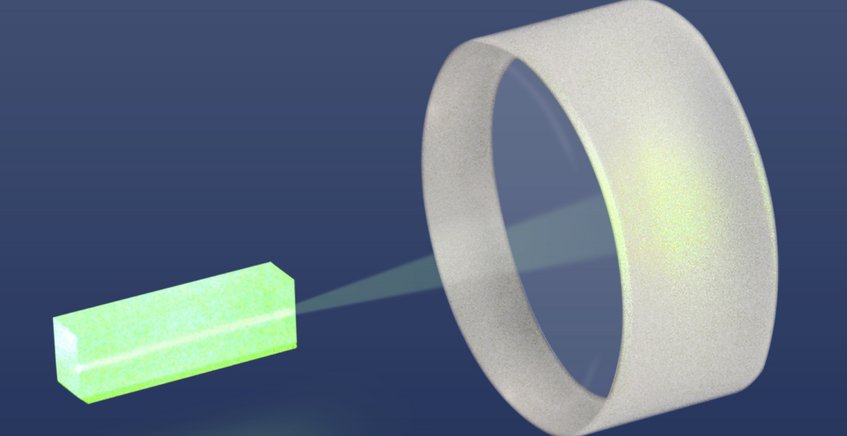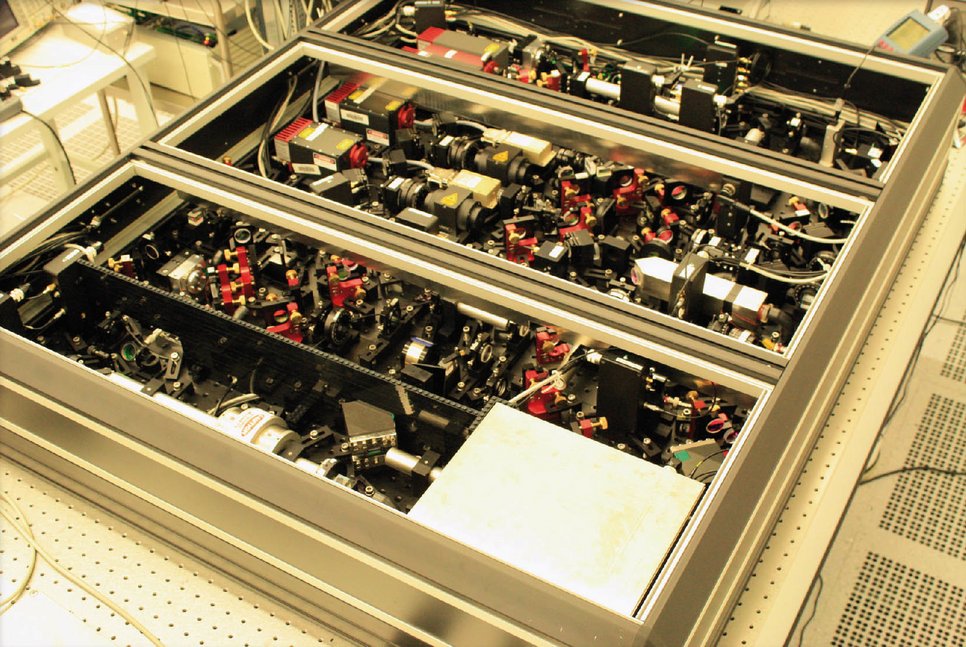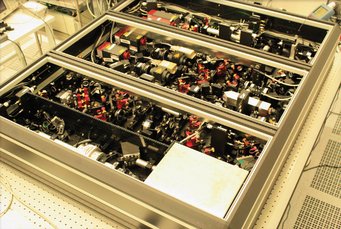
2010
Let the squeezing begin!
Photon shot noise is a limiting noise source in laser interferometric gravitational-wave detectors. The signal to shot-noise ratio can be improved by ‘squeezing’ the shot noise as proposed by Caves in 1981. In order to squeeze the shot noise of a Michelson interferometer that is operated close to a dark fringe, squeezed (vacuum) states of light have to be injected into the signal output port.

In our labs, the squeezing level achieved in the detection band from 10 Hz to 10 kHz is at least 8 dB below the shot-noise level. At several frequencies, squeezing of up to 9 dB is observed. To the best of our knowledge, this is the highest measured squeezing value at audio frequencies observed so far. Our result also belongs to the highest squeezing values ever measured. The corresponding anti-squeezing level was measured to be 14 dB above the shot-noise level over the entire bandwidth. From these measurements a total optical loss of approximately 10% on the squeezed laser field can be derived. This loss value includes the homodyne detection efficiency of approximately 95%.
Thus, the next upgrade of the GEO600 gravitational-wave detector involves the implementation of squeezed light. If the squeezed states are directly guided into the signal output port of GEO600, the diagnostic homodyne detector loss can be subtracted. We have estimated the additional optical loss for the squeezed-light field when injected into GEO600 and come to the conclusion that a non-classical detector sensitivity improvement of 6 dB might be possible for the shot-noise limited band of GEO600. After a long-term test, the squeezed light source has been implemented in GEO600 during the summer of 2010.
